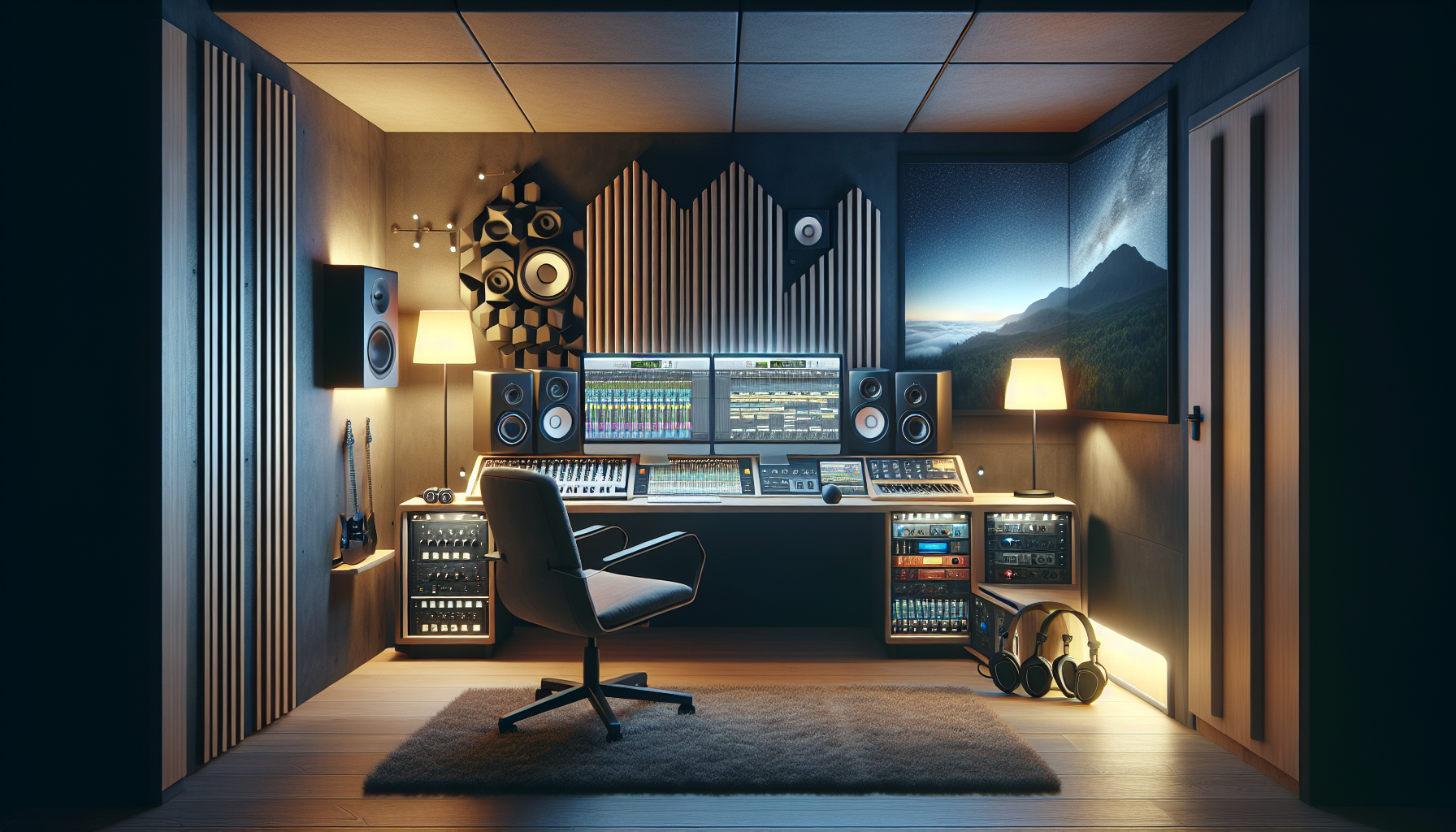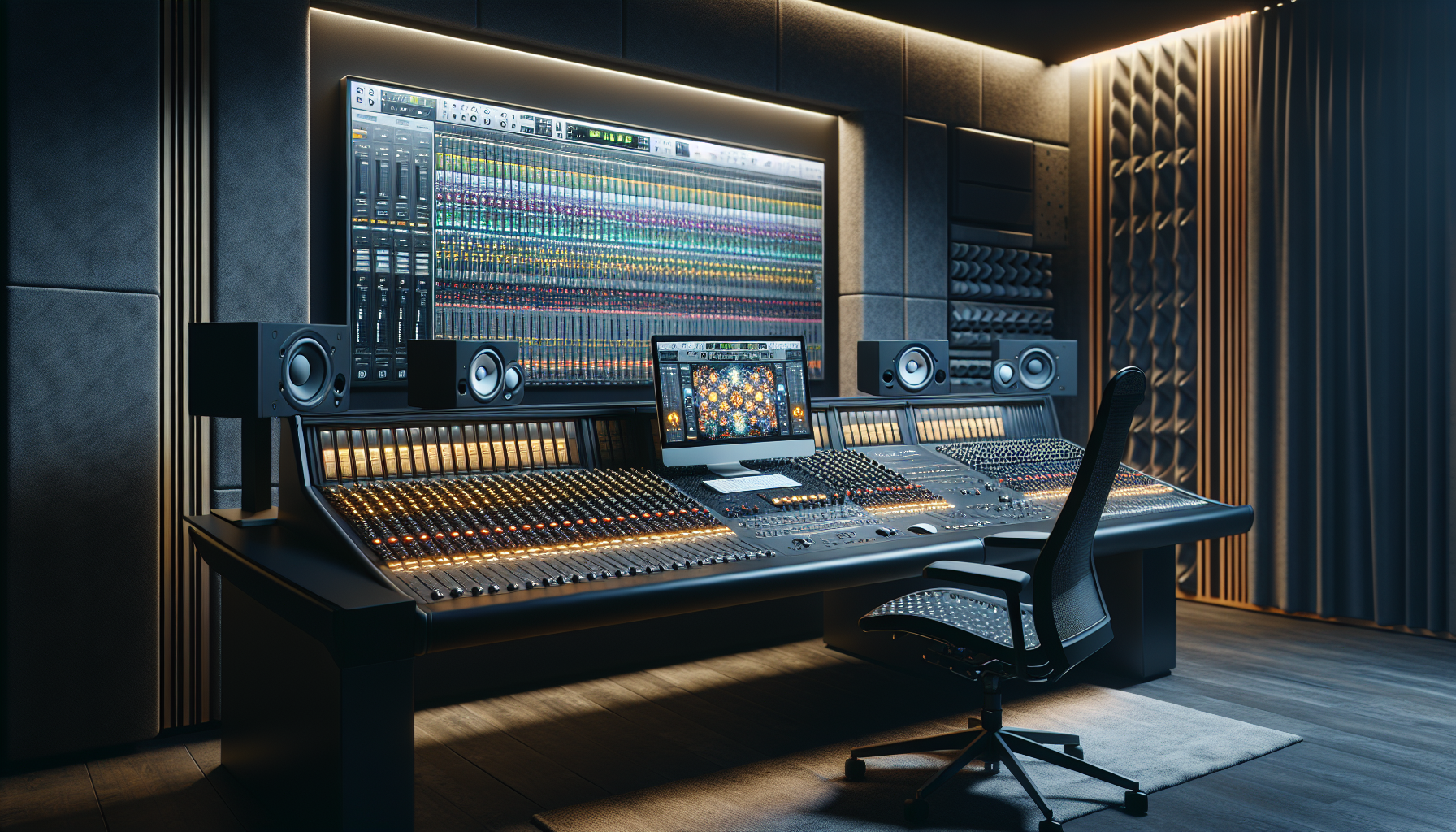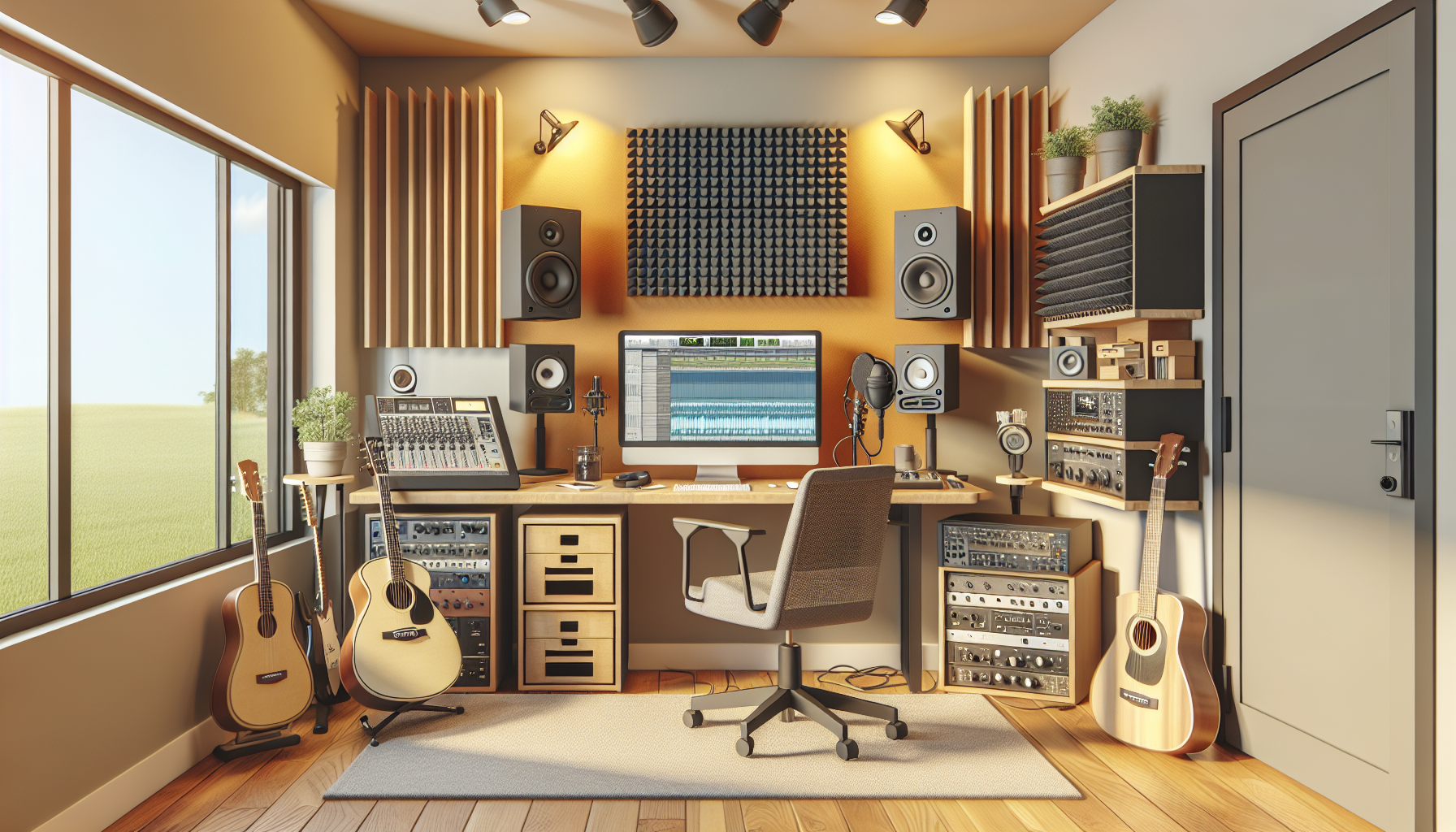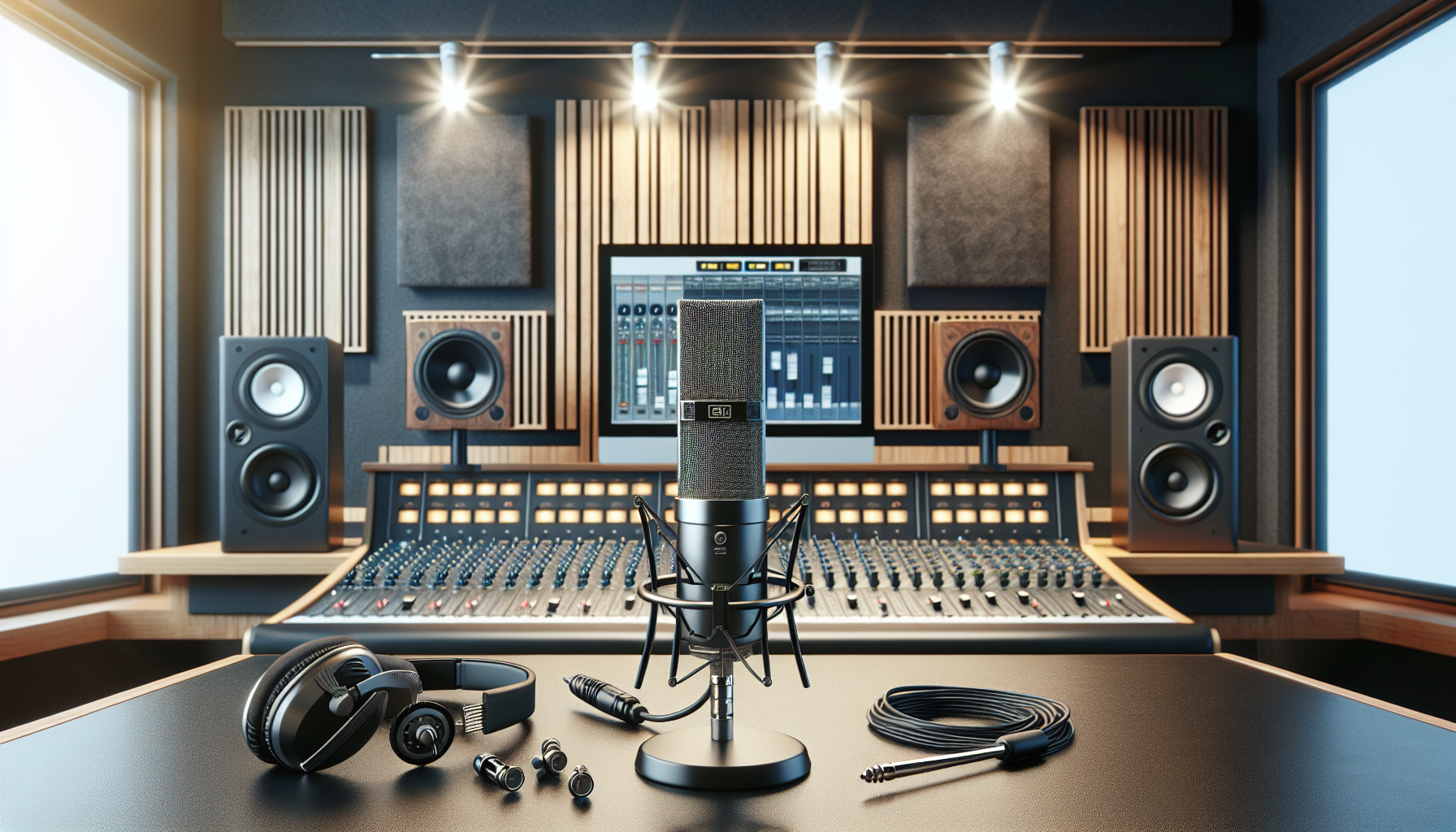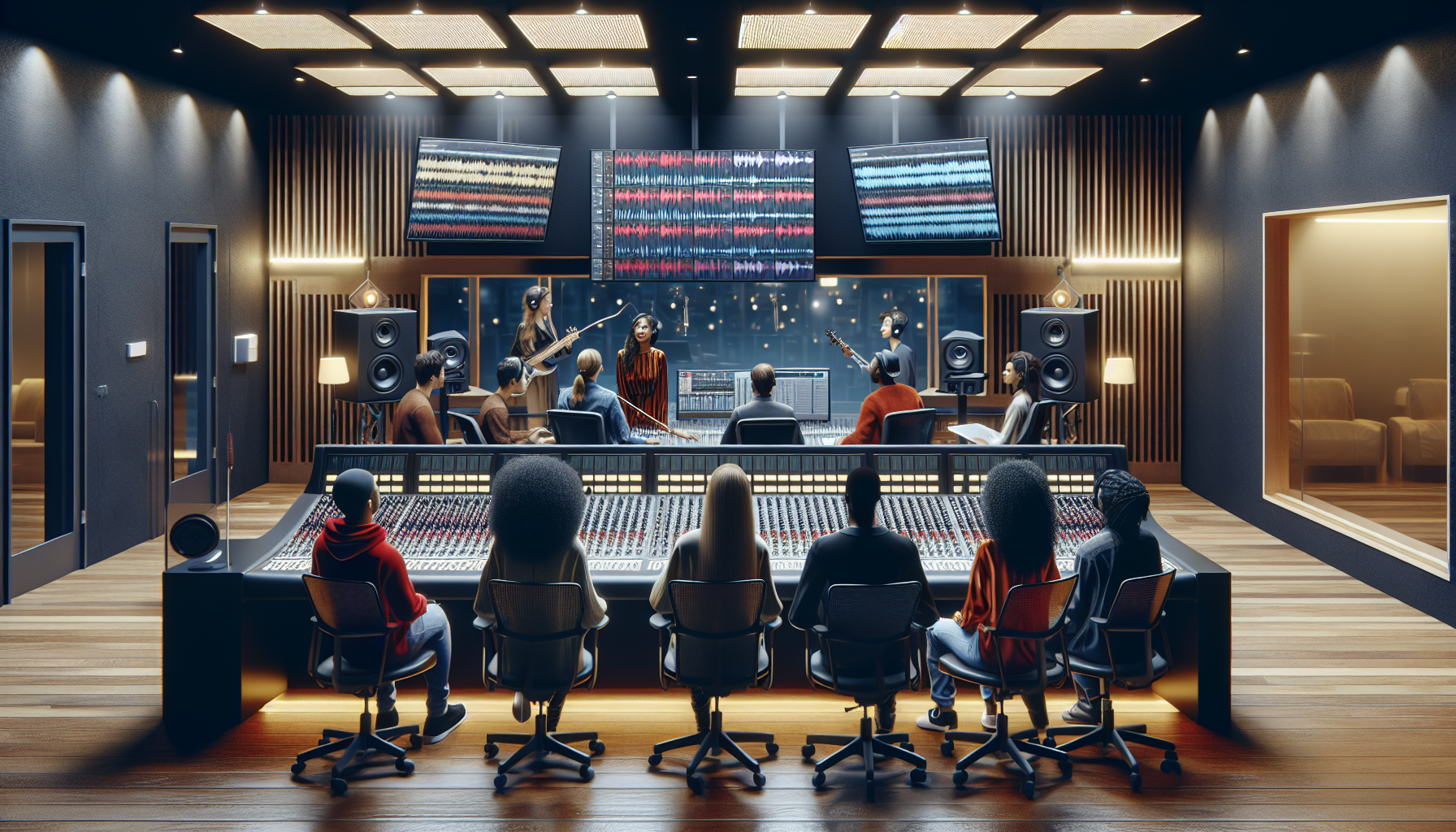Blog Post: Beginner’s Guide to Producing Your First Track
If you’ve always wanted to create your own music but aren’t sure where to start, this beginner’s guide to producing your first track is ideal. Whether you’re exploring music production basics or eager to learn how to create music at home, this straightforward guide covers the essentials—no pricey gear or prior expertise required. From mastering the fundamentals to setting up your DIY studio and crafting your debut track, this resource sets you on the path to success, helping you sidestep common mistakes and build a strong foundation in music creation.
Understanding Music Production for Beginners
Music production involves creating a finished track from an initial idea to a polished product ready for release. In today’s digital world, it combines creative and technical skills, primarily using digital tools rather than large studio setups. The key stages of producing a song include:
- Composition: Crafting melodies, harmonies, and lyrics.
- Arrangement: Structuring the song into sections like intro, verse, and chorus.
- Recording: Capturing sounds via microphones or virtual instruments.
- Mixing: Balancing audio tracks by adjusting levels, EQ, and effects.
- Mastering: Fine-tuning the mix to ensure it sounds great on all playback systems.
Vital terms for beginners include:
- DAW (Digital Audio Workstation): Software for making, recording, and editing music (e.g., FL Studio, Ableton Live, GarageBand).
- MIDI: A protocol for sending musical performance data to software instruments.
- Audio Interface: Hardware that connects microphones and instruments to your computer.
Despite popular belief, you don’t need expensive equipment to start producing music. Modern technology allows you to begin with just a computer and free software, emphasizing creativity, experimentation, and patience as you hone your skills.
Pro Tip: Focus on learning song structure basics and workflow—starting simple is more important than having high-end gear. Make music with what you have and let creativity guide you.
Essential Tools and Equipment for Beginner Music Producers
To get started in music production, you’ll need some essential tools. A basic setup includes:
- Computer: Most modern PCs or Macs are sufficient for beginner projects.
- Headphones: Closed-back studio headphones offer clear, honest monitoring.
- Audio Interface (optional but recommended): Consider beginner models like Focusrite Scarlett Solo or PreSonus AudioBox.
- MIDI Keyboard (optional): Provides hands-on control for virtual instruments; even a basic 25-key model works.
- Microphone (optional): For recording vocals or instruments—USB condenser mics are affordable and versatile.
The most crucial purchase is a DAW. Popular, beginner-friendly options include FL Studio, Ableton Live Lite, Reaper, and GarageBand (Mac). Many offer trial versions, and there are powerful free DAWs like Cakewalk and Tracktion. Software instruments provide a variety of sounds at a lower cost than hardware.
Beginner Music Production Equipment Checklist:
- Computer (laptop or desktop)
- Free DAW (e.g., Cakewalk or GarageBand)
- Closed-back headphones (e.g., Audio-Technica ATH-M20x)
- MIDI keyboard (optional: Akai MPK Mini)
- USB microphone (optional: Audio-Technica AT2020USB)
Pro Tip: Use the software instruments and plugins included with your DAW to start. Upgrade your equipment only as your skills surpass the limitations of your current tools.
Setting Up Your Home Studio for Music Production
Creating a home studio doesn’t require turning your room into a high-end facility. Focus on making your workspace comfortable and functional:
- Room Choice: Choose a quiet, undisturbed corner. Use soft furnishings like curtains and carpets to absorb sound reflections.
- Desk Layout: Keep your computer, audio interface, and headphones within reach. Use cable organizers to prevent tangles.
- Connections: Connect your audio interface to your computer via USB and plug in your headphones. Use quality USB or XLR cables.
- Soundproofing: Minimize noise with draft stoppers, heavy curtains, or foam panels placed strategically around the room.
Organization is key: label cables, assign a space for each device, and maintain organized DAW files for efficient workflow.
Pro Tip: For limited space, opt for vertical storage solutions, wall-mounted hooks, and cable ties to keep your studio setup tidy.
How to Produce Your First Track: A Simple Workflow
Follow these steps to create your first song at home:
- Pick a Genre or Style: Choose one to define your sound palette and maintain focus.
- Start with a Core Idea: Hum a melody or tap a rhythm—record voice notes if inspiration strikes.
- Program Drums and Bass: Create a basic drum pattern and bassline in your DAW using virtual instruments or samples.
- Add Chords and Melodies: Layer simple chords and melodic ideas. Use MIDI keyboards or your DAW’s piano roll.
- Record Audio (optional): If you have a mic, record basic vocals or instruments, capturing multiple takes to choose from.
- Arrange Song Structure: Organize parts into an intro, verse, chorus, bridge, and outro. Keep structures simple initially.
- Refine with Effects: Add basic reverb or delay for depth but use effects sparingly at first.
Focus on completion rather than perfection. Your first track is about learning, not attaining perfection.
Pro Tip: Set a firm deadline to finish your project (e.g., “finish my first demo this weekend”). Deadlines encourage progress and prevent endless tweaking.
Introduction to Mixing and Mastering for Beginners
Mixing involves balancing and shaping sounds so they work well together in a track, while mastering gives the finished mix a consistent, polished sound. As a beginner, use these steps:
- Start with Volume and Panning: Adjust track levels and use panning for spatial clarity.
- Apply EQ: Adjust frequencies so each instrument remains distinct (e.g., reduce low mids in vocals).
- Simple Compression: Apply gentle compression to level out dynamic ranges.
- Reverb: Use reverb for space, but don’t overuse it to maintain a clean mix.
For mastering, utilize your DAW’s basic presets for loudness and tonal balance. Listen to your track on different headphones or speakers for best results.
Pro Tip: Rely on your ears more than visual meters. Briefly solo each element, then listen to the overall mix—good balance is more important than the fanciest plugins.
Common Challenges for Beginners and Solutions
Every beginner faces challenges like procrastination, gear envy, and feeling overwhelmed. Overcome them by:
- Creative Block: Engage in “quick sketch” sessions of 15-30 minutes for non-judgmental experimentation.
- Limited Gear: Master your current tools, as most DAWs include free instruments and effects.
- Perfectionism: Remind yourself that each project is a learning opportunity. “Done” is better than “perfect.”
- Burnout: Set realistic goals (e.g., “Finish one track this month”) and take regular breaks.
- Feedback: Share your music with friends or online communities for constructive input.
- Routine: Schedule regular sessions, even if just for 20 minutes a day, to build skills and momentum.
Pro Tip: Join music producer forums and local meetups—free advice and collaboration opportunities can boost your growth and motivation.
Advancing Your Skills and What’s Next
Finishing tracks and building a portfolio is essential for growth as a producer. Continue learning through free music production resources like YouTube tutorials, and beginner courses. Practice consistently, experiment with new sounds, and don’t hesitate to step outside your comfort zone. Each completed track enhances your expertise and confidence in music production.
Taking the leap into creating your first track is both exciting and rewarding. Remember, the tools and technology may aid your journey, but your passion and creativity will ultimately shape your music. Enjoy the process, and start making your first music production tracks today!

